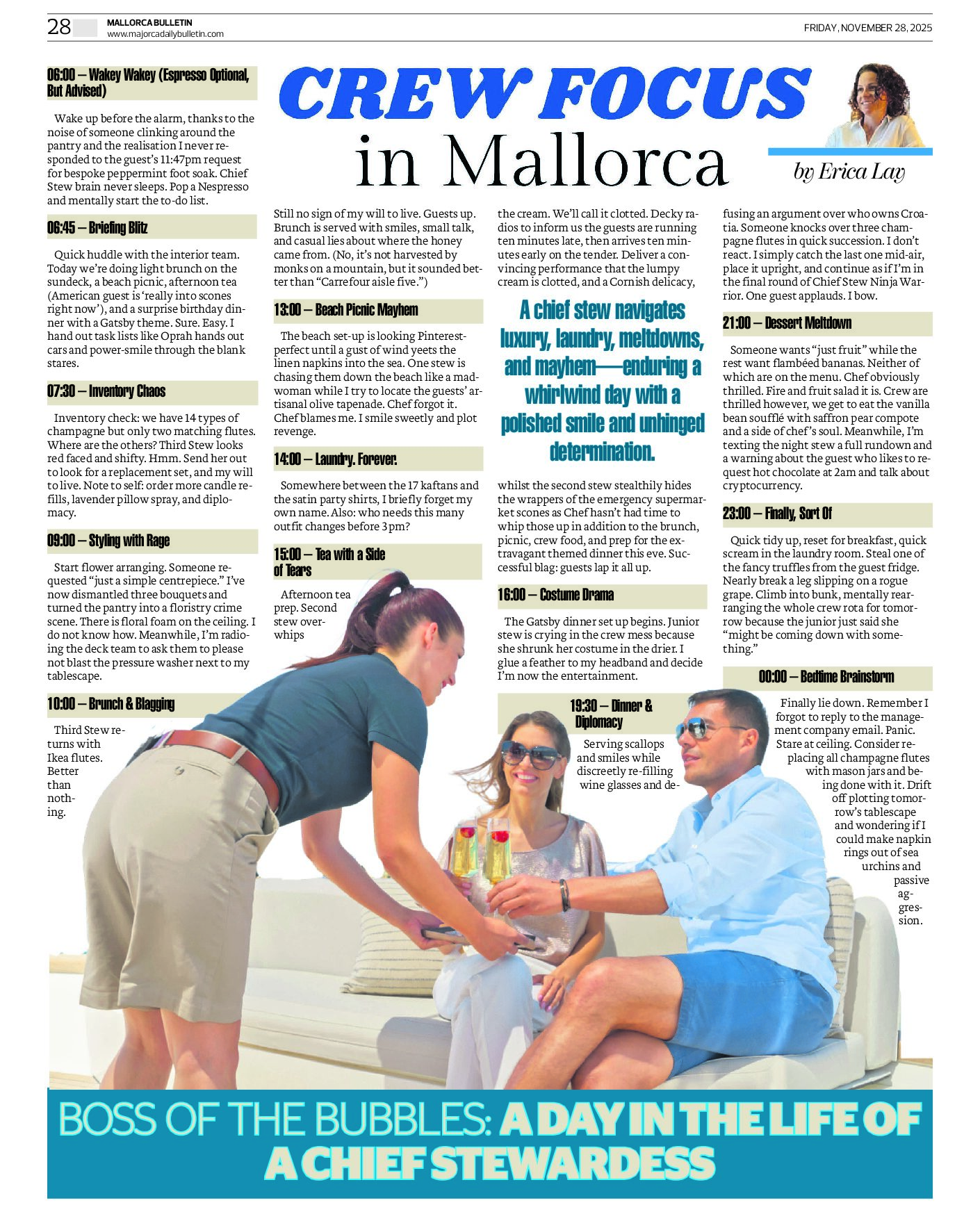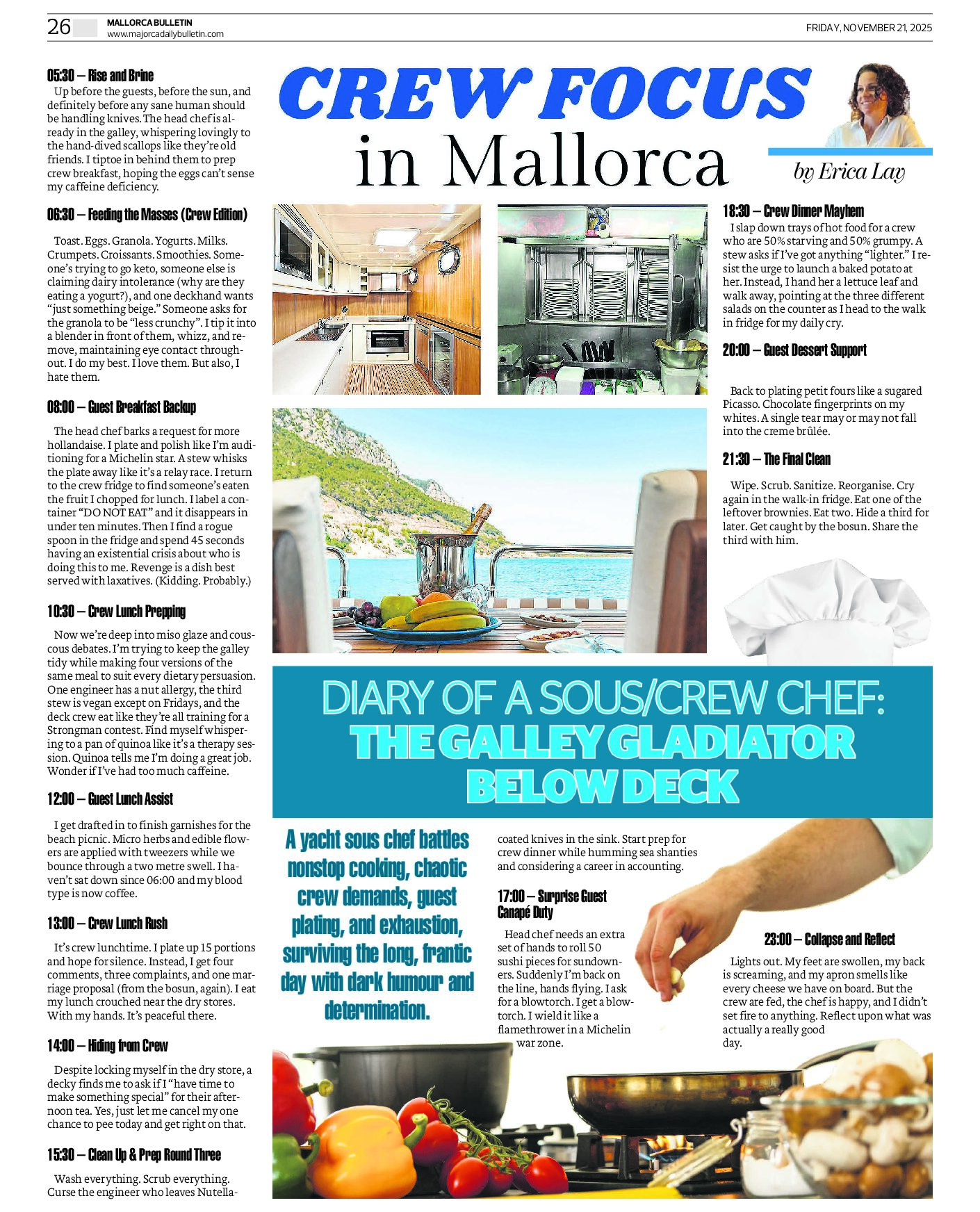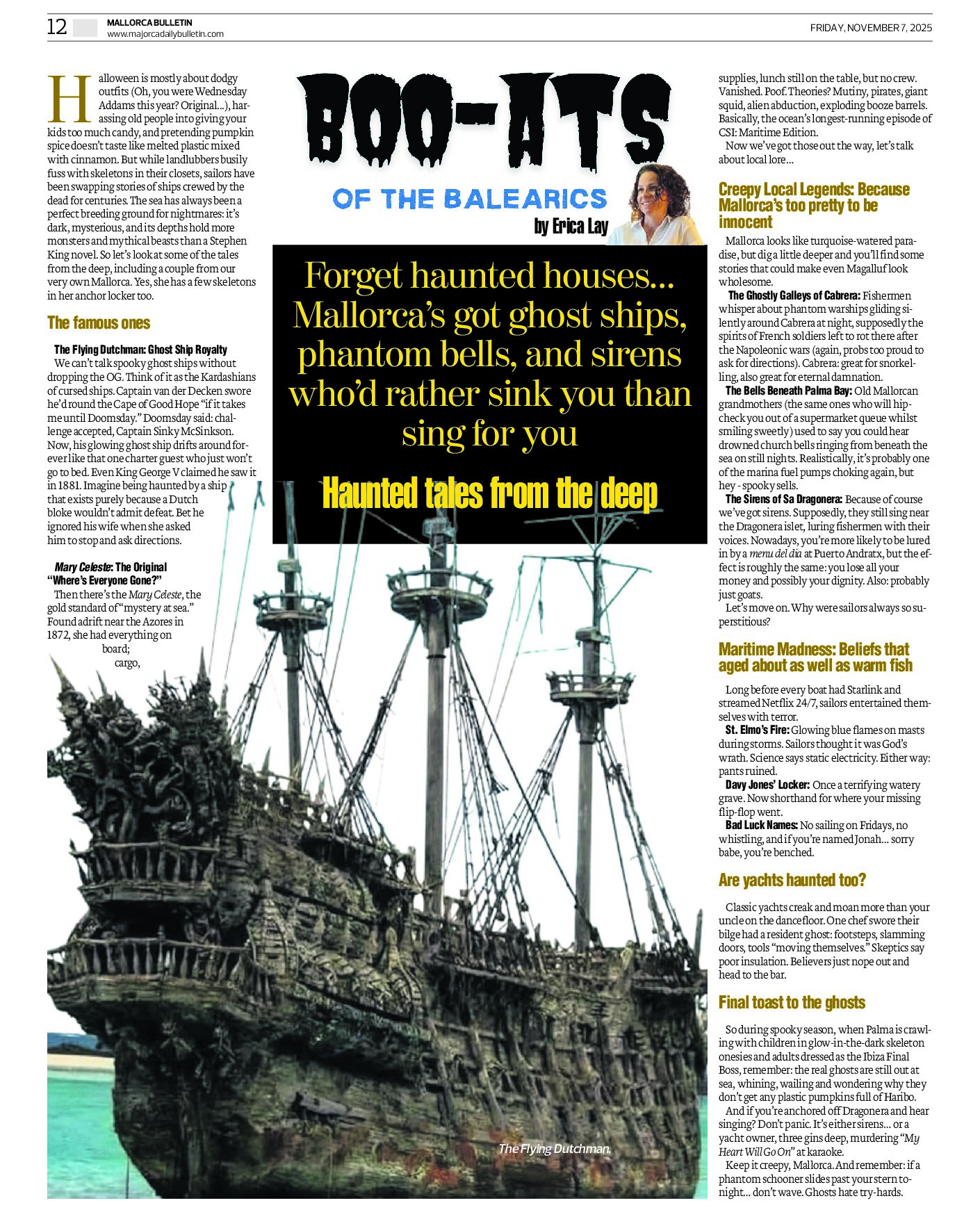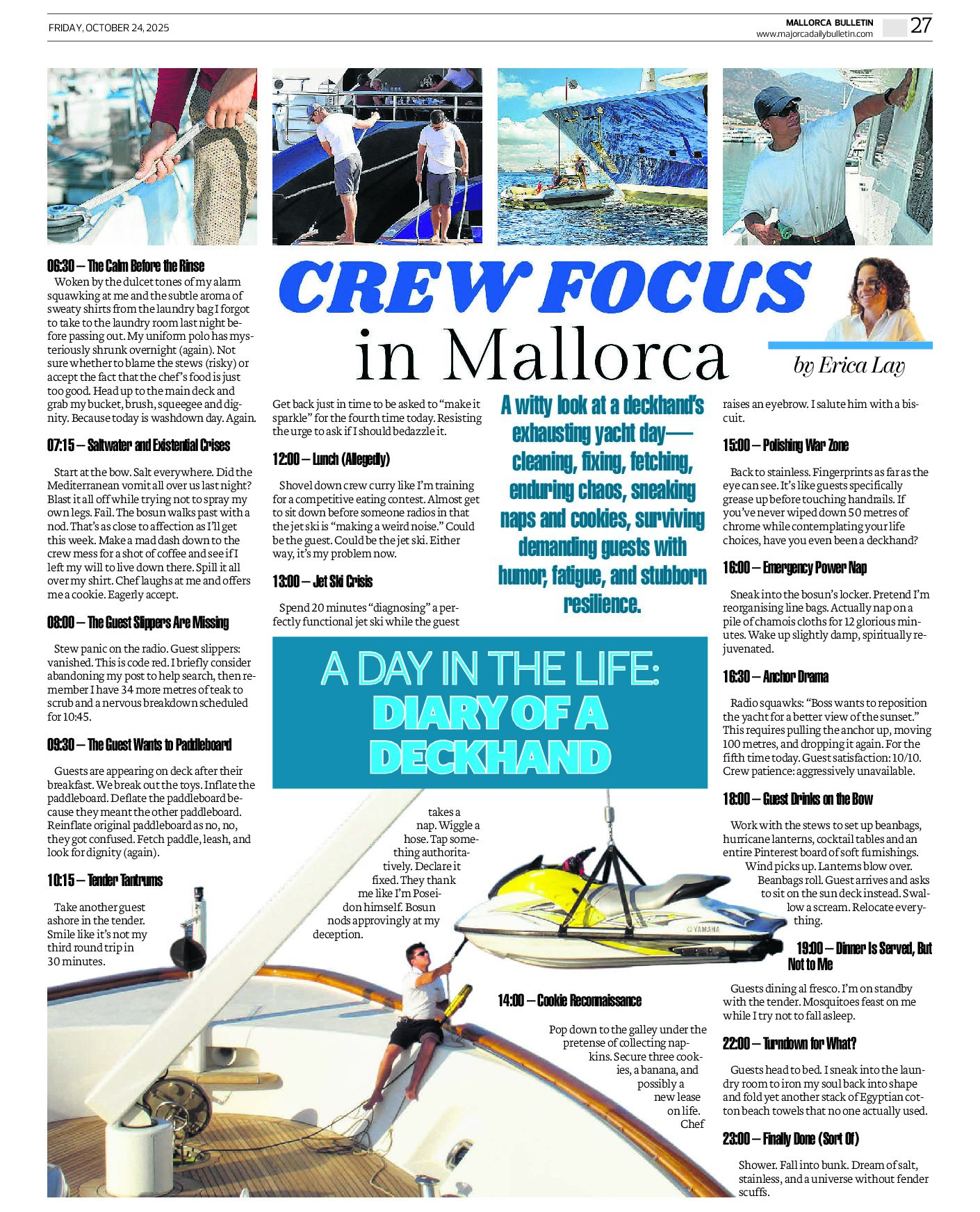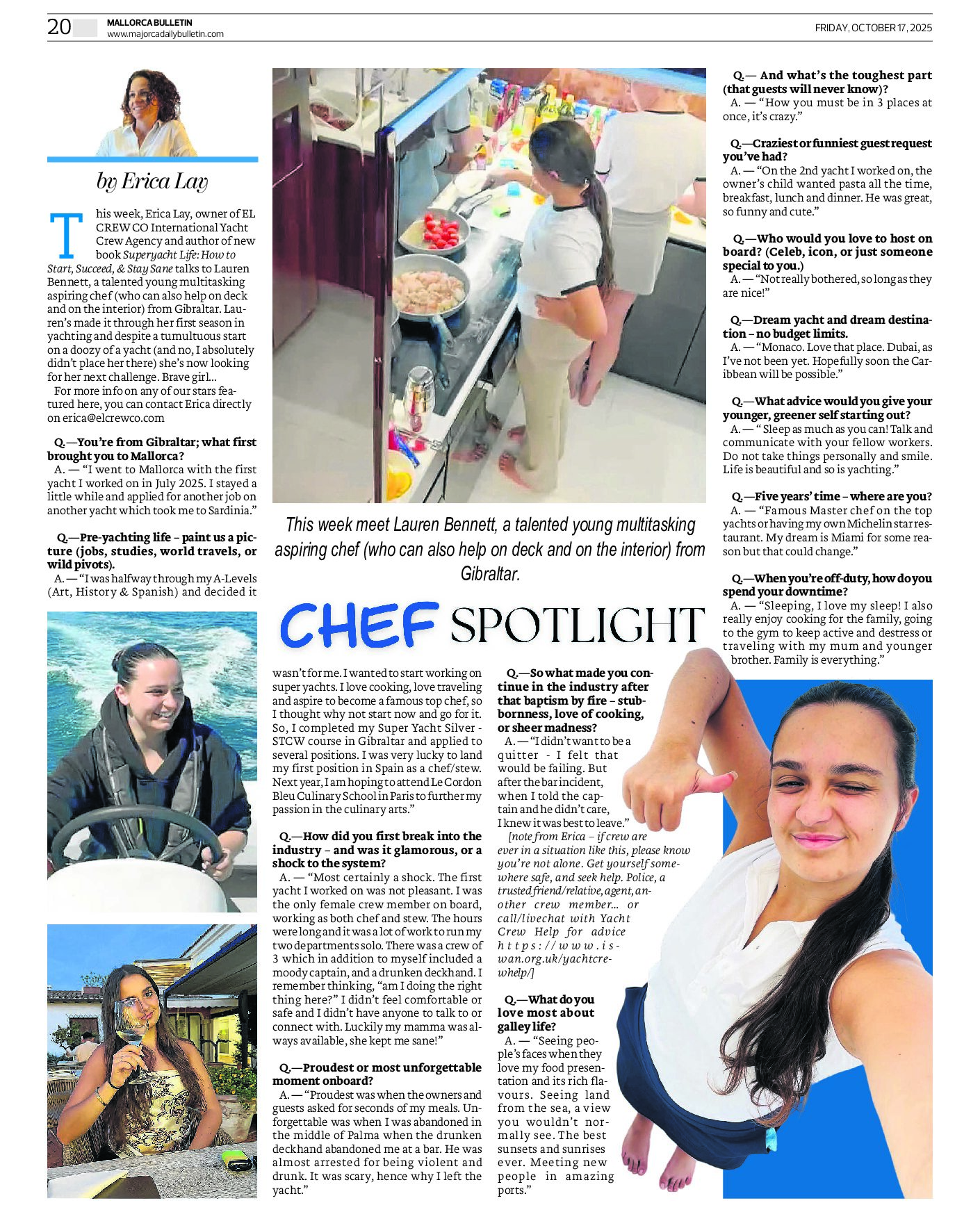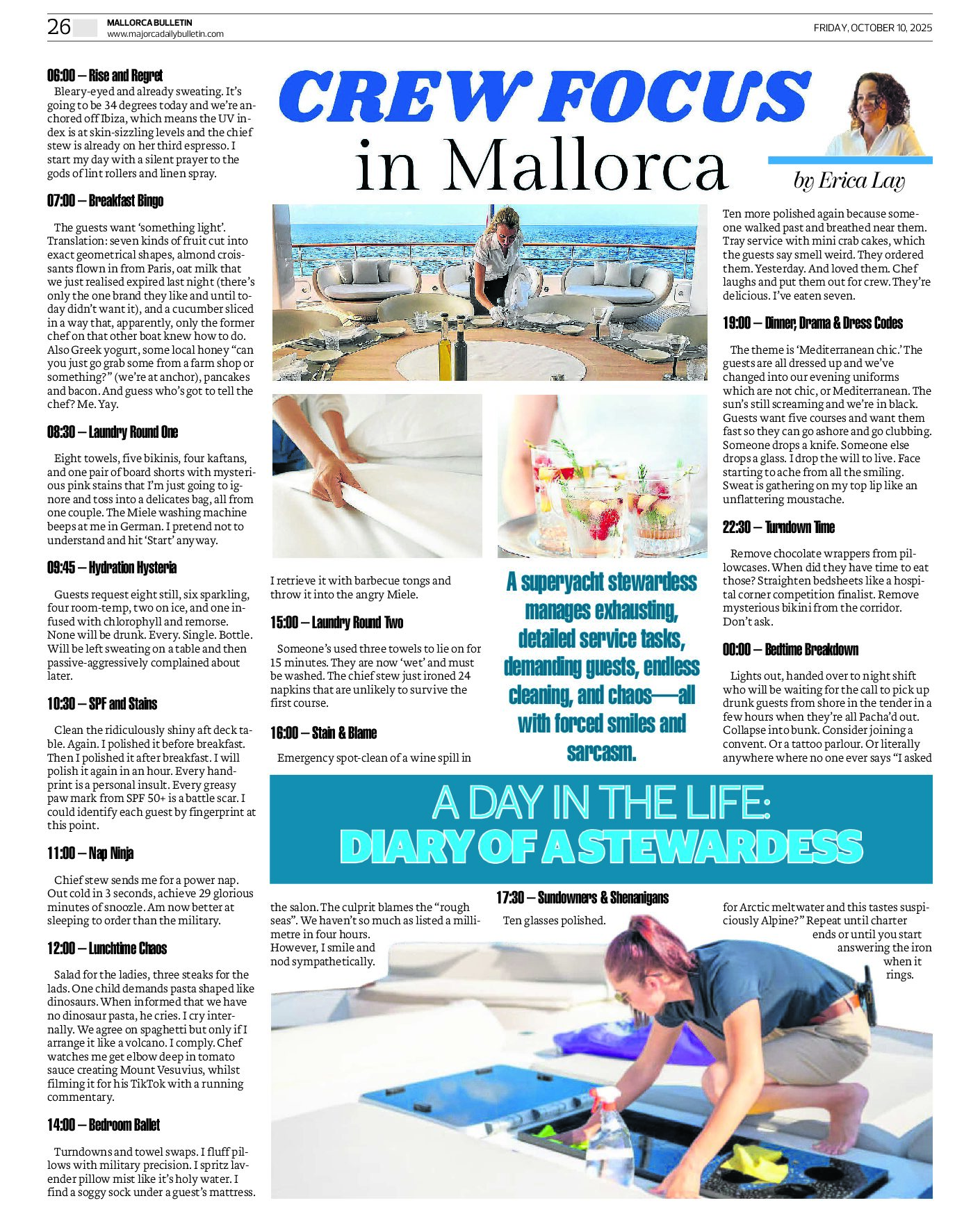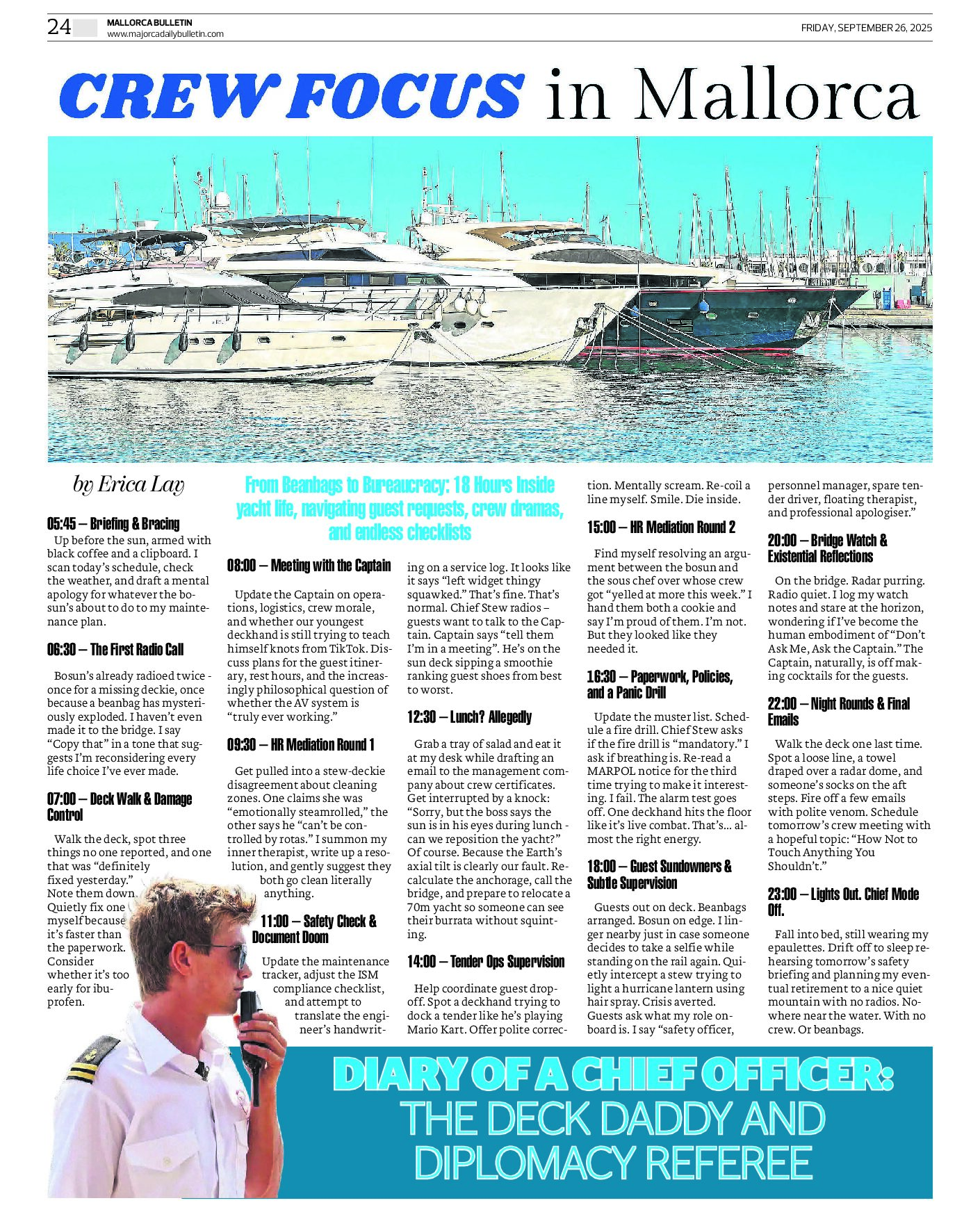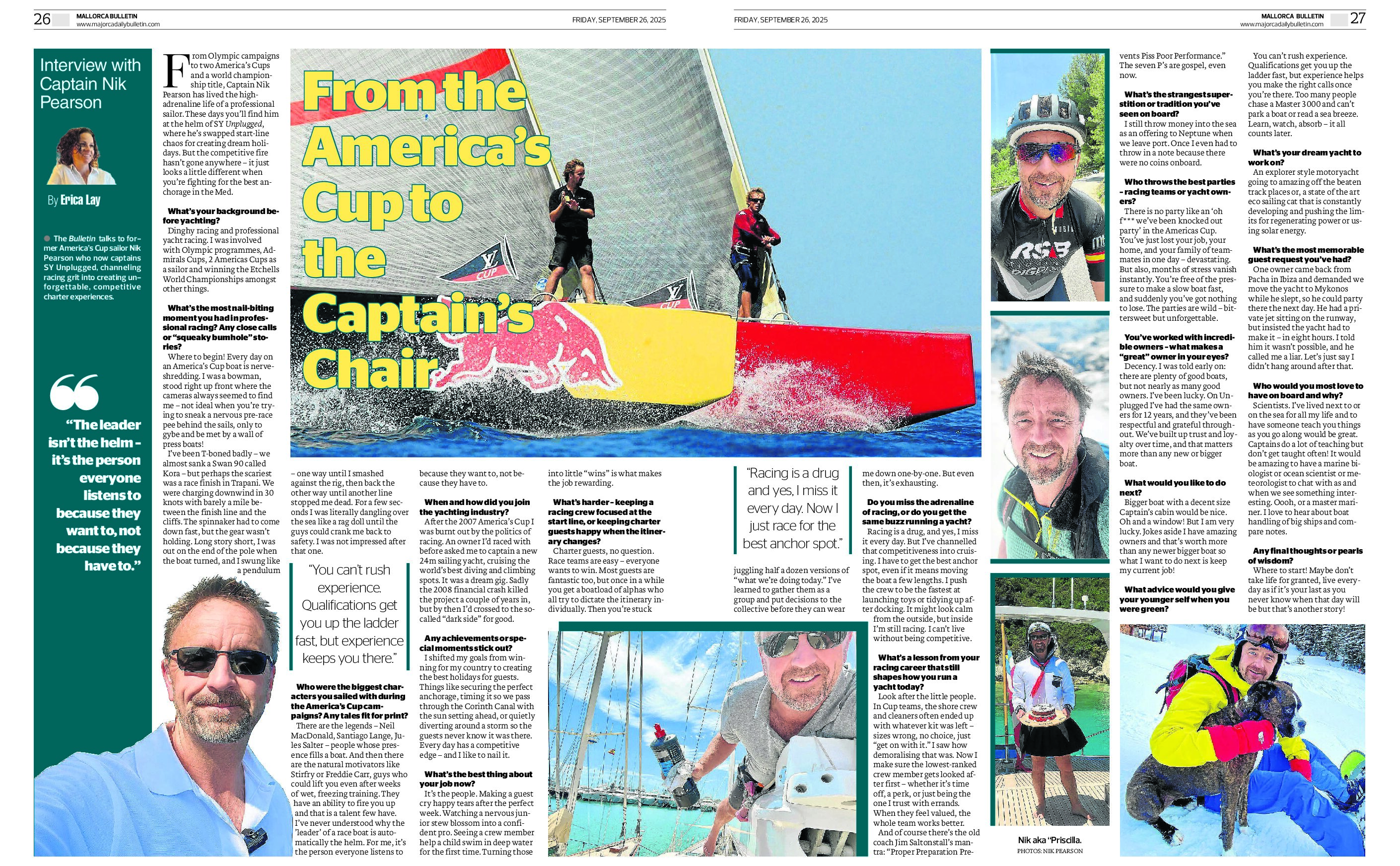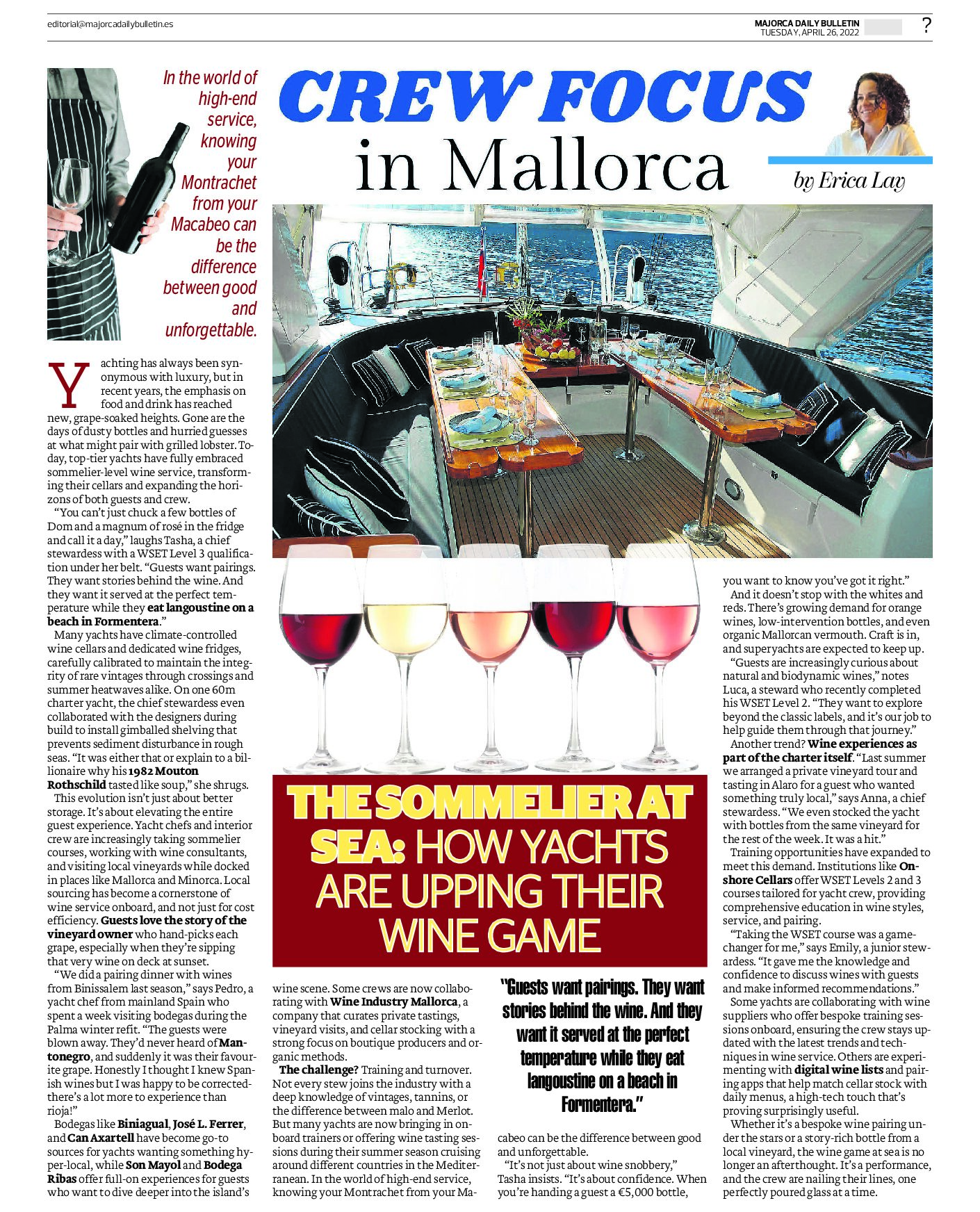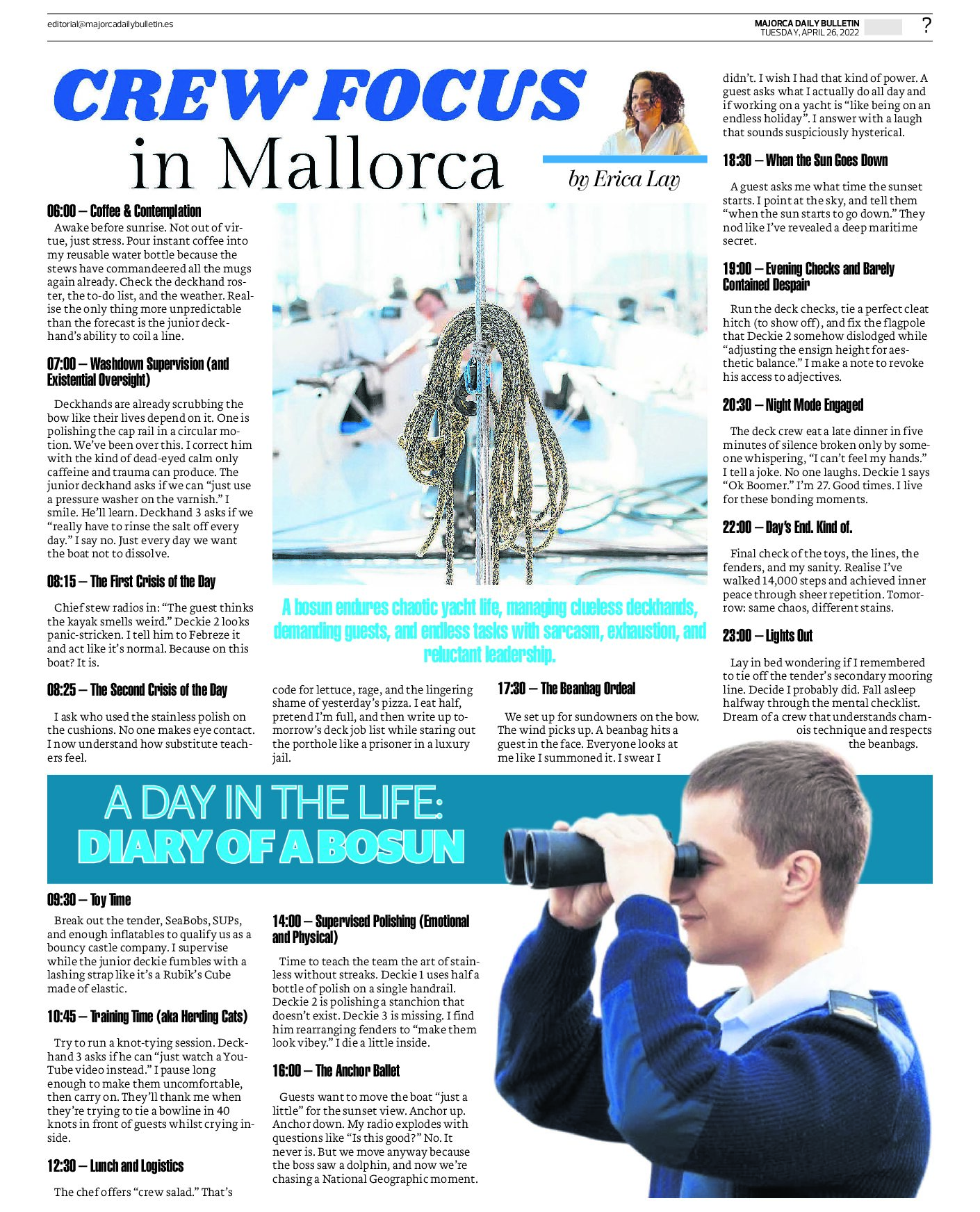Boss of the Bubbles: A Day in the Life of a Chief Stewardess
With Courtesy of Erica Lay & The Mallorca Bulletin. #25/1121.
Erica Lay is owner of EL CREW International Yacht Crew Agency http://www.elcrewco.com/ erica@elcrewco.com.
By Erica Lay
06:00 – Wakey Wakey (Espresso Optional, But Advised)
Wake up before the alarm, thanks to the noise of someone clinking around the pantry and the realisation I never responded to the guest’s 11:47pm request for bespoke peppermint foot soak. Chief Stew brain never sleeps. Pop a Nespresso and mentally start the to-do list.
06:45 – Briefing Blitz
Quick huddle with the interior team. Today we’re doing light brunch on the sundeck, a beach picnic, afternoon tea (American guest is ‘really into scones right now’), and a surprise birthday dinner with a Gatsby theme. Sure. Easy. I hand out task lists like Oprah hands out cars and power-smile through the blank stares.
07:30 – Inventory Chaos
Inventory check: we have 14 types of champagne but only two matching flutes. Where are the others? Third Stew looks red faced and shifty. Hmm. Send her out to look for a replacement set, and my will to live. Note to self: order more candle refills, lavender pillow spray, and diplomacy.
09:00 – Styling with Rage
Start flower arranging. Someone requested “just a simple centrepiece.” I’ve now dismantled three bouquets and turned the pantry into a floristry crime scene. There is floral foam on the ceiling. I do not know how. Meanwhile, I’m radioing the deck team to ask them to please not blast the pressure washer next to my tablescape.
10:00 – Brunch & Blagging
Third Stew returns with ikea flutes. Better than nothing. Still no sign of my will to live. Guests up. Brunch is served with smiles, small talk, and casual lies about where the honey came from. (No, it’s not harvested by monks on a mountain, but it sounded better than “Carrefour aisle five.”)
13:00 – Beach Picnic Mayhem
The beach set-up is looking Pinterest-perfect until a gust of wind yeets the linen napkins into the sea. One stew is chasing them down the beach like a madwoman while I try to locate the guests’ artisanal olive tapenade. Chef forgot it. Chef blames me. I smile sweetly and plot revenge.
14:00 – Laundry. Forever.
Somewhere between the 17 kaftans and the satin party shirts, I briefly forget my own name. Also: who needs this many outfit changes before 3pm?
15:00 – Tea with a Side of Tears
Afternoon tea prep. Second stew overwhips the cream. We’ll call it clotted. Decky radios to inform us the guests are running ten minutes late, then arrives ten minutes early on the tender. Deliver a convincing performance that the lumpy cream is clotted, and a Cornish delicacy, whilst the second stew stealthily hides the wrappers of the emergency supermarket scones as Chef hasn’t had time to whip those up in addition to the brunch, picnic, crew food, and prep for the extravagant themed dinner this eve. Successful blag: guests lap it all up.
16:00 – Costume Drama
The Gatsby dinner set up begins. Junior stew is crying in the crew mess because she shrunk her costume in the drier. I glue a feather to my headband and decide I’m now the entertainment.
19:30 – Dinner & Diplomacy
Serving scallops and smiles while discreetly re-filling wine glasses and defusing an argument over who owns Croatia. Someone knocks over three champagne flutes in quick succession. I don’t react. I simply catch the last one mid-air, place it upright, and continue as if I’m in the final round of Chief Stew Ninja Warrior. One guest applauds. I bow.
21:00 – Dessert Meltdown
Someone wants “just fruit” while the rest want flambéed bananas. Neither of which are on the menu. Chef obviously thrilled. Fire and fruit salad it is. Crew are thrilled however, we get to eat the vanilla bean soufflé with saffron pear compote and a side of chef’s soul. Meanwhile, I’m texting the night stew a full rundown and a warning about the guest who likes to request hot chocolate at 2am and talk about cryptocurrency.
23:00 – Finally, Sort Of
Quick tidy up, reset for breakfast, quick scream in the laundry room. Steal one of the fancy truffles from the guest fridge. Nearly break a leg slipping on a rogue grape. Climb into bunk, mentally rearranging the whole crew rota for tomorrow because the junior just said she “might be coming down with something.”
00:00 – Bedtime Brainstorm
Finally lie down. Remember I forgot to reply to the management company email. Panic. Stare at ceiling. Consider replacing all champagne flutes with mason jars and being done with it. Drift off plotting tomorrow’s tablescape and wondering if I could make napkin rings out of sea urchins and passive aggression.

